
Celebrating four women in our Art in Architecture Program
Post filed in: Art in Architecture
From the sweep of Maine forests to rolling earthwork sculptures, GSA is celebrating women in the agency’s Art in Architecture program during Women’s History Month. This month it’s particularly important as the program is celebrating its 50th anniversary.
Yvonne Jacquette
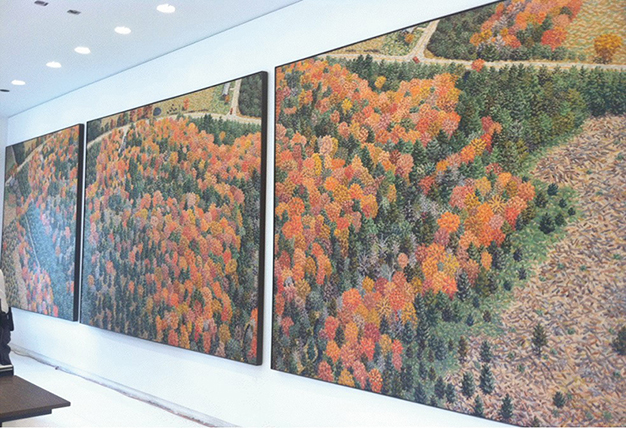
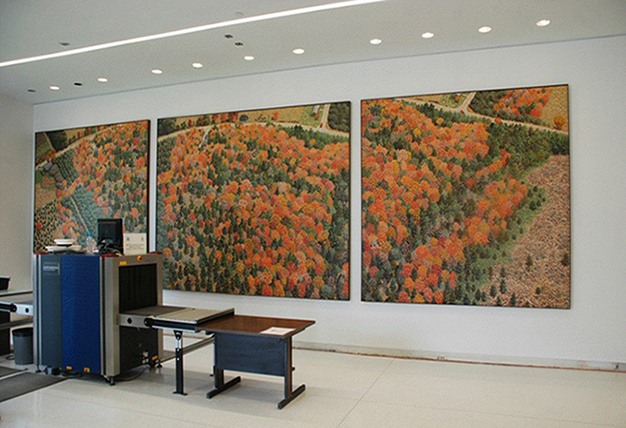
In 1981, Yvonne Jacquette created Autumn Expansion for the original lobby of the Margaret Chase Smith Federal Building in Bangor, Maine. Jacquette’s interest in aerial landscape began on a flight to San Diego in 1969. Peering out from rooftops, skyscrapers, and airplane windows, she sketches and photographs the scenes below. Her three-part mural for the federal building offers overlapping views of forests in nearby Searsmont, Maine, which Jacquette captured in a series of pastel sketches composed while she circled overhead in a small airplane. “I flew from Belfast at noon every day in mid-September for five days to get the same light,” she said.
Maya Lin
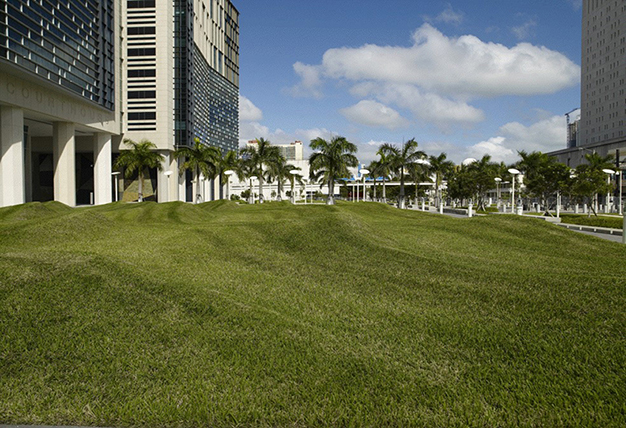
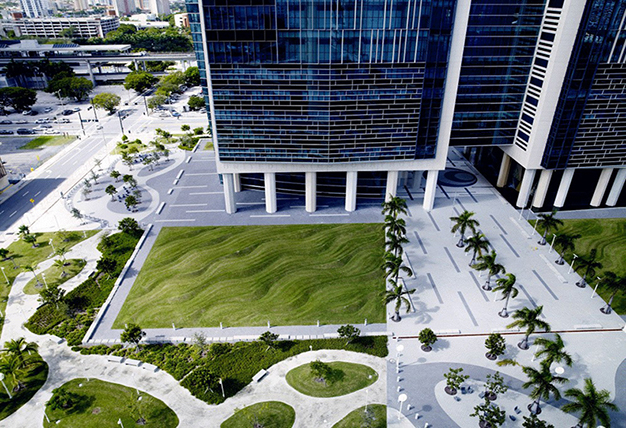
Maya Lin is an environmental artist and landscape architect who rose to fame while as a senior at Yale University after she designed the Vietnam Veterans Memorial in Washington, D.C. During her decades-long art career, she has explored how we experience and relate to landscapes. In 2005, Lin created Flutter at the Wilkie D. Ferguson, Jr. U.S. Courthouse in Miami, Florida. Occupying more than an acre of land in front of the main entrance to the courthouse, Flutter comprises a pair of sculpted lawns that mimic rippling water or sand, a familiar sight to residents and visitors of coastal south Florida. Flutter, like Lin’s other large-scale earthen artworks, reflects her passion for exploring natural phenomena and translating naturally occurring environments into sculpted form. Her works are artistic responses to the beauty that exists in the natural world.
Mary Temple
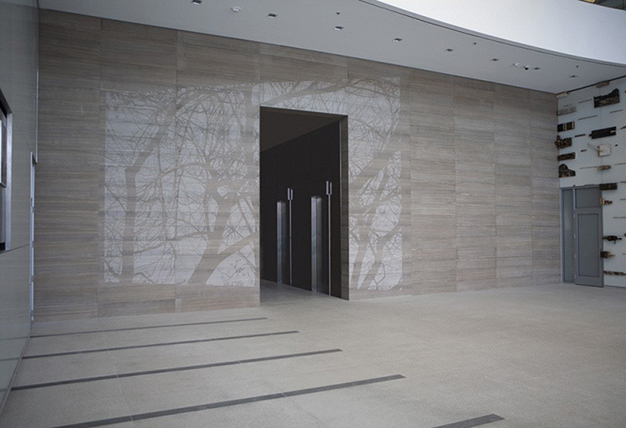

Mary Temple’s art blurs the boundaries between painting, sculpture, and drawing. In Winter Light, at the George Thomas Mickey Leland Federal Building in Houston, Texas, Temple employed an art technique called trompe l’oeil (French for “deceive the eye”) to create an intriguing optical illusion in limestone. While looking at the artwork, it appears that light illuminates the large passageway of the federal building’s lobby. Temple made this image of sunlight dappling through tree branches by subtly etching their silhouettes into the wall’s polished limestone surface. She has stated that this etched image of light is a metaphor for knowledge and leadership, two qualities exemplified by Mickey Leland, the Texas congressman for whom the federal building is named.
Patricia Leighton
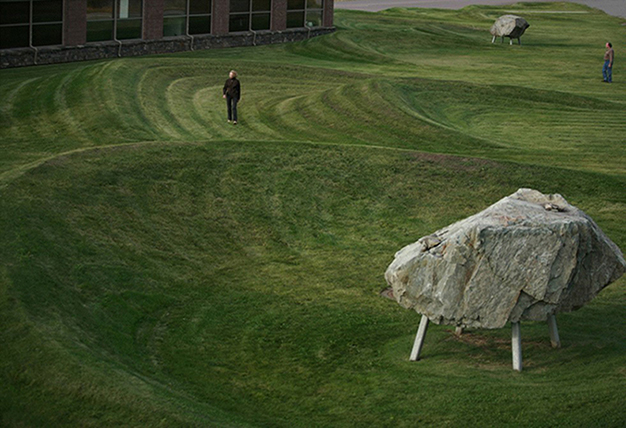
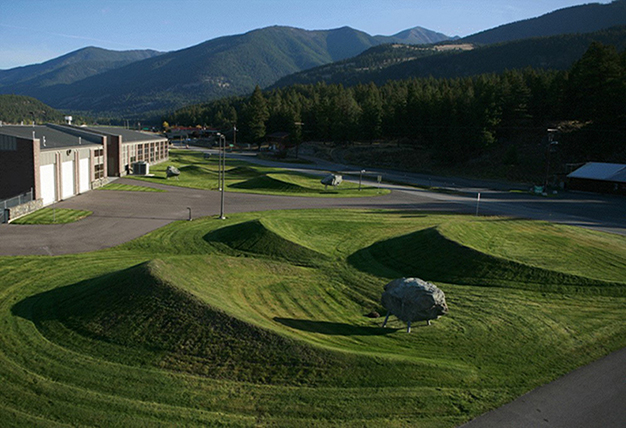
Born in Greenock, Scotland, Patricia Leighton has been creating large-scale art pieces worldwide for decades. She utilizes soil available on the site of her work to create large earthwork sculptures. She incorporates stone and indigenous materials that tie into the surrounding landscape to create artwork that can be viewed from the air. For the U.S. Land Port of Entry in Roosville, Montana, Leighton and her husband, artist Del Geist, collaborated to create Passage, an outdoor installation inspired by the dramatic topography and rich geological history of northern Montana. Spanning 1,000 feet along the site’s main drive, Passage consists of a field of smoothly tapered earth mounds and a series of irregularly spaced boulders. The mounds echo the glacial cirques, dunes, and drumlins, or oval shaped hills, that comprise much of the regional landscape, while the boulders—each of which is approximately 1.3 billion years old—reflect the vast power of time and geological processes. Positioned along the site’s north-south axis, the boulders allude to paths of trade and migration that have defined the region since the last glacial period, some 10,000 to 12,000 years ago.

 U.S. General Services Administration
U.S. General Services Administration
